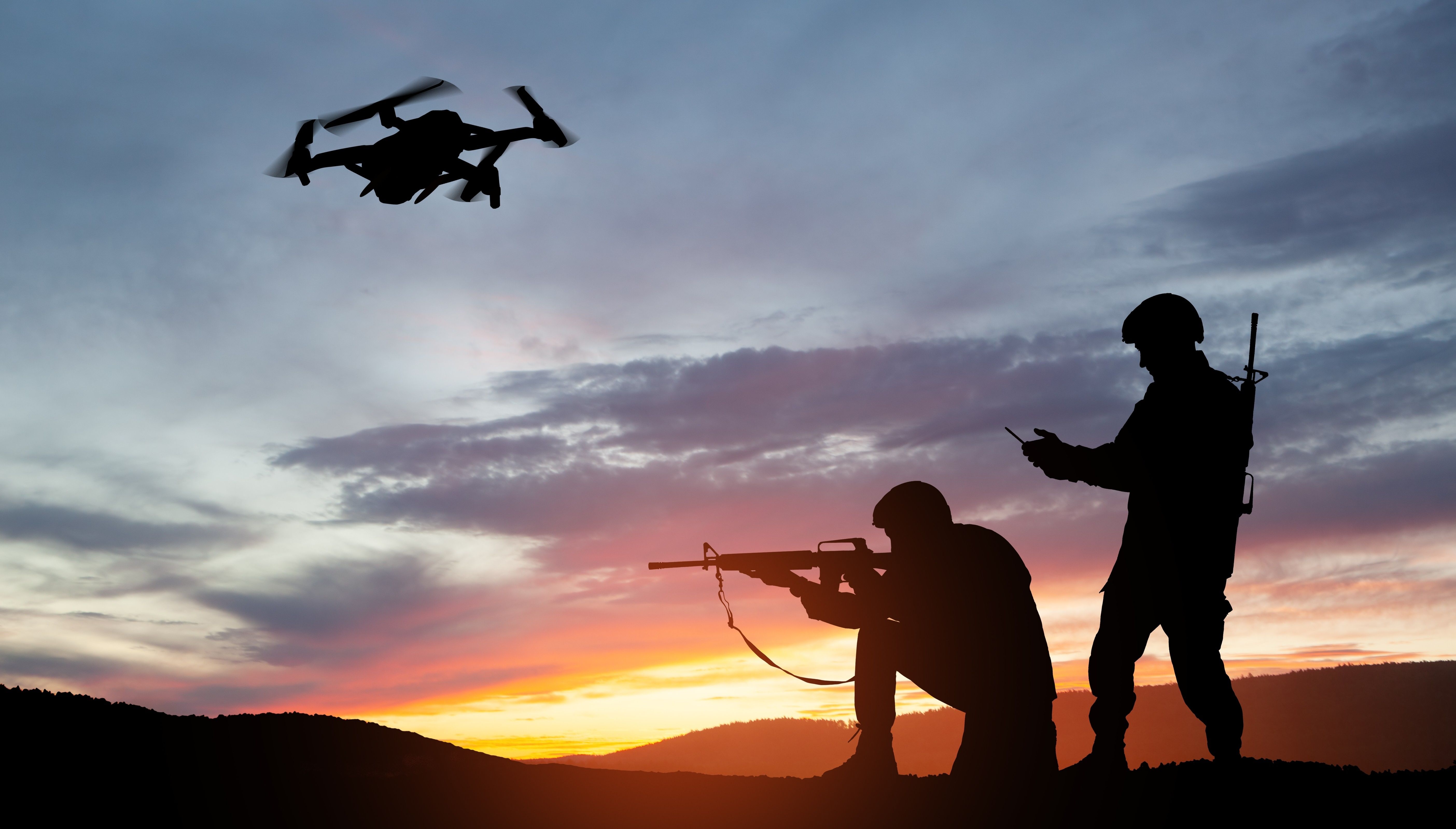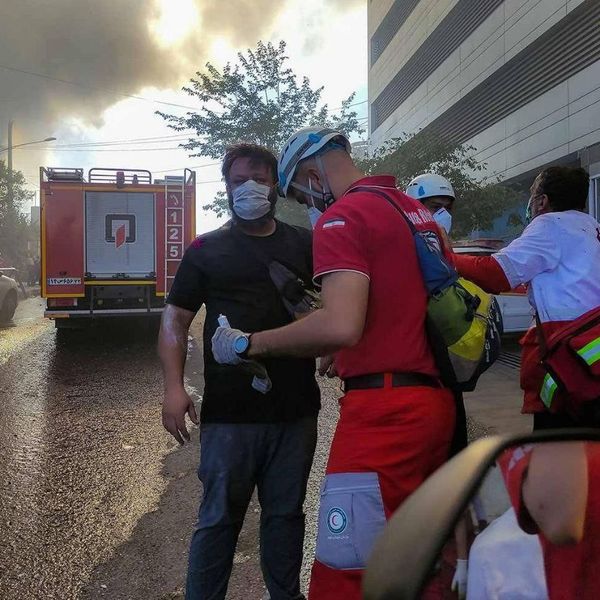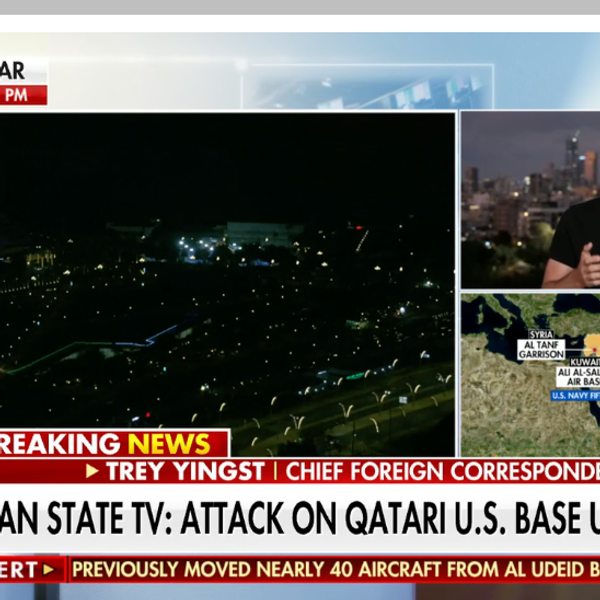Yemen faces a drone doom loop that is a harbinger of things to come for many countries.
The increasingly rapid diffusion of drone technology offers endless new opportunities for non-state, near-state, and terrorist groups to attack governments, rivals, infrastructure, and commercial interests. While Yemen’s Houthi rebels currently field more advanced drones than any of their domestic rivals, that is slowly changing as the technology and know-how spreads among their rivals.
The Houthis, therefore, are going to soon find it harder to defend against drone attacks by their rivals. They and, sadly Yemeni civilians, are going to be stuck in an escalating drone doom loop.
The capabilities of commercially available drones increase every month. The development of military grade drones proceeds even faster. The war in Ukraine has further spurred the development and rapid deployment of cheap and deadly drones. Yet these advances and their diffusion come at a time when states across much of the world, especially in the global south, are being hollowed out by corruption, environmental degradation, and the concomitant rise of armed groups who fill the voids.
Yemen was a hollow state long before the Houthis seized the Yemeni capital in 2014. The Sana’a-based government of Yemen’s longtime president, Ali Abdullah Saleh, never fully controlled Yemen. Instead, it relied on non-state groups, namely tribes and militias, to help it maintain security and keep its enemies off-balance.
And as is typical in hollow states, a circle of elites based in the capital were the primary beneficiaries of Yemen’s post-1990 oil wealth. After the 2010 “Arab Spring,” Yemen transitioned from a hollow state to a failed state, a status from which it is unlikely to emerge any time soon.
The Houthis control most of northwest Yemen and are now the foremost military and political power there. Yet dozens of other armed groups hold sway in other parts of the country. Almost all of these groups are, at a minimum, using off the shelf drones for intelligence, surveillance, and reconnaissance. Militias and armed units with the backing of either Saudi Arabia or the UAE use military-grade armed and surveillance drones to target their enemies.
On any given day, the skies above Yemen’s larger cities and those above contested areas like the besieged city of Taiz are crisscrossed by surveillance drones of all sizes. The drones range from military grade UAVs equipped with wide angle lenses and thermal imaging, to stripped down commercial drones with upgraded batteries for added range.
Armed gangs, which target commercial transport on Yemen’s roads, use drones to track and assess valuable cargoes before seizing them. They use the same drones to then make sure their escape routes are clear. Al-Qaida in the Arabian Peninsula has used drones to carry out multiple attacks and locate and track individuals targeted for assassination.
Meanwhile, the Houthis have incorporated drones into almost every aspect of their security services and armed forces, even to track individuals and gather evidence that is later used to blackmail persons of interest.
Individuals with experience modifying, building, programming, and operating drones are a hot commodity in Yemen where they command high salaries. Many of these men are happy to freelance and work for whichever group pays the most. In Yemen’s thriving arms markets, high-end drones are the most sought after military gear.
For the Houthis, their drone and missile programs, both of which are aided by the Iranians, are their foremost military priority. The armed drones and missiles helped provide the Houthis with the needed leverage to bring their external rivals to the negotiating table.
It is this ability to target vital infrastructure in Saudi Arabia that has encouraged the Kingdom to enter into bi-lateral negotiations with the Houthis. Saudi Arabia cannot implement its ambitious 2030 agenda if there is an ongoing threat of aerial attack from its populous southern neighbor. While Saudi Arabia is upgrading its air defenses, the Kingdom is reluctant to continue to spend billions trying to defend its airspace against armed drones and missiles that cost a tiny fraction of what it costs to defend against them.
The militants ’expanding drone and missile capabilities not only give them leverage abroad but also at home where they have succeeded at stopping Yemen’s internationally-recognized government (IRG) from exporting oil. They have targeted oil handling infrastructure and threatened to target tankers that attempt to dock at oil terminals located in areas outside of Houthi control. They want their cut of the revenue and are happy to starve the IRG and southern separatists of funds.
The collateral damage is the Yemeni economy and increasingly impoverished Yemeni citizens.
However, the Houthis’ rivals are rapidly developing their own drone capabilities. In the case of those armed groups backed by Saudi Arabia and the UAE, they are also beginning to deploy counter-drone systems to protect vital installations.
But the counter-drone measures, even the most sophisticated, will fail to keep up with the production of cheaper and harder to detect drones. The advent of 3D printing — which the Houthis already use for some parts for their drones and missiles — will ensure that access to top-notch drones spreads even further. Add to this the dissemination of accessible artificial intelligence and virtual trainers, all of which are coming online in Yemen, and the possibilities for sowing mayhem are endless.
Many of Yemen’s tribes have a long history of taking hostages or attacking infrastructure as a means of addressing grievances. Now, many of these same tribes and allied armed groups use drones as tools to facilitate both. Even in the unlikely event that some kind of peace deal is achieved in Yemen, the spread of drone technology will continue to ensure that investment in critical infrastructure is limited. Yemen’s oil and gas pipelines and pumping stations are all easy targets for any group wanting to ensure that they receive their share of revenue, jobs, or development funds.
Yemen was in most respects a broken state long before the proliferation of this technology and it will help ensure that Yemen remains a failed state for the foreseeable future. The unchecked spread of a technology that allows even the least sophisticated armed groups to monitor and attack distant targets with few risks, means that many other fragile states will become mired in a drone doom loop.
- Houthi missile launches at Israel risk reigniting war in Yemen ›
- How the Houthis outwitted and out-fought everyone ›
- Houthis are playing with fire. But who gets burned? - Responsible Statecraft ›
- Don't like radical Houthis? Blame Bush's wars | Responsible Statecraft ›
- Bombing isn’t the only way out of the Houthi crisis | Responsible Statecraft ›
- Israel using secret AI tech to target Palestinians | Responsible Statecraft ›














